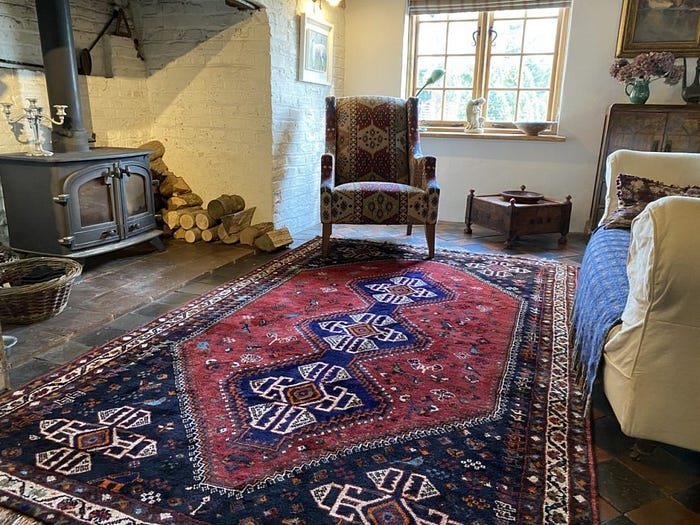Tribal Rugs — A Form of Decorative Art
As some experts have indicated, tribal rugs and rug weaving can be traced back to the Bronze Age, 3,500 years ago. The various decorative arts, rug making, and rugs themselves are representative of a culture in the form of works of art, sculptures, as well as other creative forms. Tribal rugs are not the same as compared to oriental city production carpets. This is still hand-woven, durable, and of the highest quality, although they tend to be slightly smaller in size, and also often have different designs.
The oldest carpet recently discovered was found in 1949 inside the burial place of a prince in the Pazaric Valley of the Altai Mountains of Siberia. It has been frozen in constant frost for over 2500 years! Pazyrk carpets are constantly on display in the State Hermitage Museum in St. Petersburg.
Rug weaving is one of the main occupations of the tribes. Nomads do not weave large sized rugs as they move around the flat parts of the mountains within pastures. Rugs are woven on simple, easily attachable looms and have patterns that are passed down from one generation to another by mostly linguistic traditions. The style used by tribal men and women often signifies fertility, health, and the wish to have children, and is an icon that protects nomads from evil. Colors extracted from nature are limited in number.
Many weavers have been trained in weaving through their families from an early age, and the number of wefts and the type of knot to tie largely depend on their heritage and location. Although many of the former nomadic (pastoral) weavers now live in the villages, their rugs are mostly expressions of patterns that have been woven for many generations, with each pattern or symbol indebted to memory.

Tribal rugs are usually made from organic raw materials such as dyes and are mostly hand-woven. They are often 80–100 KPSI and the designs are usually simpler geometric to realize with wider spacing knots. Traditional heavy flower patterns with vases, foliage, palm and garden elements, small animals or plants, etc. are commonly used in designs. This kind of rug was woven by tribes in Iranian communities. There are also tribal weavers from the Caucasus and Turkos. Most of the Persian tribal rugs are very exceptional, with the exception of the weaving techniques that adhere to old Persian traditions that date back to millennia.
Although the weaving of Persian rugs is now mostly mechanical, the most popular and expensive rugs in general continue to be hand-woven in many regions of Iran, such as Baluch Rugs, Shiraz Rugs and Wiss Rugs. The rich art and culture of ancient Persia. Persian city rugs, such as Nain, Qum, Kashan, Isfahan, Tabriz, Mashad, Kerman etc. for example, are created with elaborate designs of buds and flowers supported by vines and vines, outlined by arabesques that create balanced tones . Persian tribal rugs are often made using natural raw materials such as dyes and are mostly hand-woven. Whether you’re referring to silk persian rugs or cotton persian rugs, they’re still equally worthwhile.
Tribal Rugs are great for decorating the sides of the home that is smaller than the traditional living areas, kitchen spaces, etc. They’re great for beautifying small bedrooms, study and dining areas, but nevertheless group several together. Tribal rugs have grown into a very trendy product for shoppers who enjoy bold, basic designs.
Contrary to popular belief, floors can play an important role in interior decoration. Surprisingly, many homeowners aren’t aware that floorboards can be as fun to style as the rest of the home.

.jpg)


Comments
Post a Comment